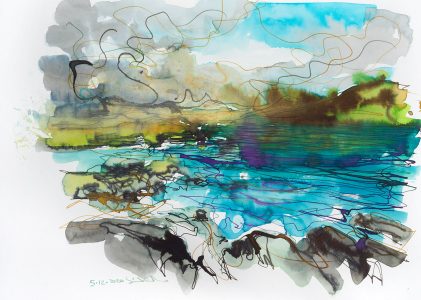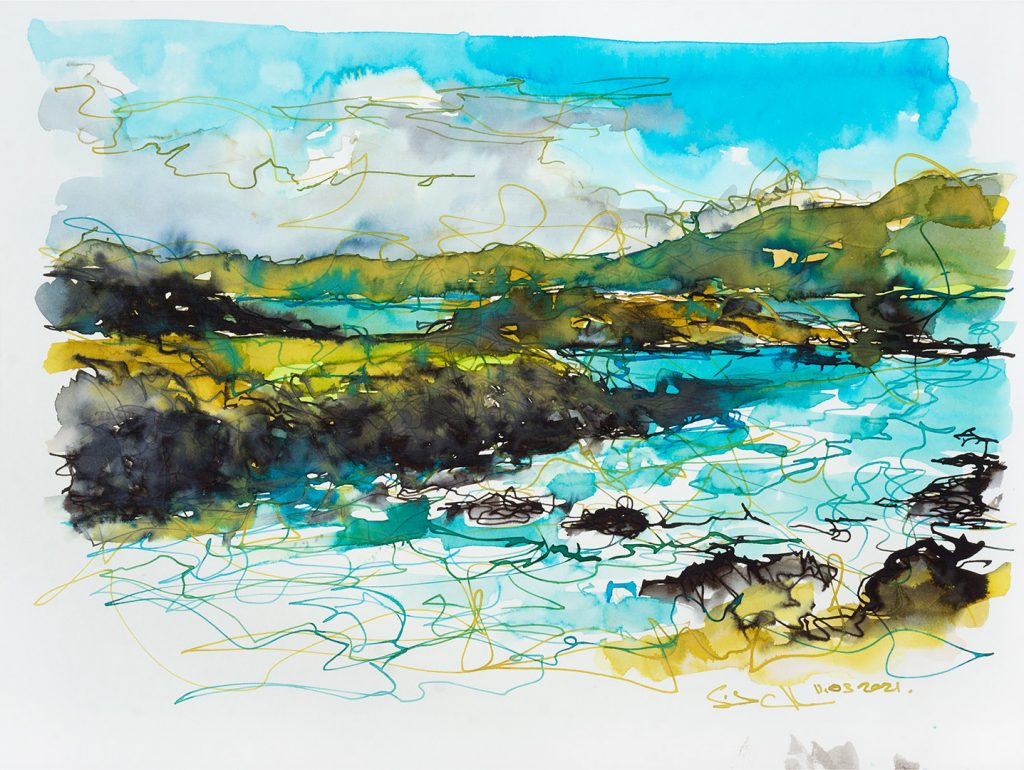
Most people think of creativity as being artistic or musical, but the Cambridge dictionary defines it as: “the ability to produce or use original and unusual ideas”. Creativity is about noticing connections between different things; it is about bringing something new into the world and it doesn’t have to result in a famous work of art. It can be part of some of the very simple building blocks of your day-to-day life.
1 Having Fun
If you are thinking “but really, I’m not creative”, a good place to start to find examples of creativity in your life is in moments when you are happy; when there is a spark of joy associated with an activity. These are usually times when we are engaging your body, heart and mind: playing games, laughing, dancing, conjuring up a lovely surprise for a friend.
Absorbed in play, children’s lives are all about exploring and trying things out, their brains are alive with neural activity. In our light-hearted and child-like moments we are letting ourselves explore, at ease with the world around us, opening to new ways of seeing, experiencing and engaging.
2 Nurturing
The idea of nurturing usually conjures up images of babies being brought into the world and parents caring for them. And yes, lots of creativity is required in enticing a child to eat their vegetables or negotiate with them and their desire to bring that new scooter to bed with them. It is also in how we nurture and care for ourselves: exercising and feeding our bodies, taking care of how we look, trying out new colours, patterns and styles in how we dress. It is also in how we take care of our family and friends, our homes, gardens and surroundings: creating the perfect gift, getting curious about how to rearrange the living room or seeing what plants might love to thrive in the garden or on your balcony.
3 Mending and tending
Many of the crafts of the past emerged from the necessity to manage day-to-day life: crafts of sewing, weaving, carpentry and metal work all evolved from essential tasks. Today few of us use these old crafts daily but we all engage in activities that involve mending and tending items around the house and garden. We are seeing rising interest in zero waste lifestyles, reduced consumerism and a resurgence in reusing, fixing, sewing and knitting; putting your hands to work. And also there is a ‘growing’ interest in G.I.Y. and D.I.Y. planting, tilling, fixing, mending and making, indoors and out.
4 Inventing and experimenting
You might not be a scientist or an entrepreneur but when you are alone in your kitchen, cooking and preparing meals, adding in that new ingredient, creating a new flavour that ignites your taste buds (hopefully in a positive way) you are creating. Planning a weekend away, a date or an outing with friends are all simple everyday ways of coming up with new ideas; combining, exploring new places, having new experiences; engaging the creative parts of your brain. Online on social media and games there is potential for creativity through problem solving, videos, photos and memes assuming that we don’t get sucked down too many zoned out rabbit holes.
5 Taking risks and breaking rules
This might sound exciting for some and terrifying for others but as humans we have all taken risks and broken rules; it is how we learn. We are not all engaging in extreme sports or organised crime but we have all had to learn where the edges of your comfort and learning zones are. We explore and expand your horizons; feel the fear and do it anyway; trust our gut and take reasonable precautions. It can be as simple as trying old things in new ways: following a hunch or a gut feeling or simply taking a different route on the way to work. These small changes and risks fire up new creative pathways in our brains.
6 Making mistakes
When we experiment, try new things and break rules we will make mistakes. This might be the last thing we think of as being creative, but trying and making mistakes is how creative learning works. It is only by falling, over and over again, as toddlers that we learn how to stand and walk. Mistakes are an inevitable part of any creative process big or small. Unfortunately it is in giving ourselves a hard time for failing that we can stop ourselves from trying again.
Creativity is a process; an iterative cycle of learning and exploring, making mistakes and trying things again. We repeat things in new and different ways based on what we have been learning. You will make mistakes, so let yourself celebrate them and ask yourself: what have I learned? How would I do this differently next time? Just make sure to be kind to yourself: this is an on- going process.
7 Problem solving
So much of creativity is in aspects of problem solving: recognising gaps and connecting disparate pieces of information together. This is more obvious in the work of industrial designers, builders, engineers or architects but you are solving problems on a daily basis: figuring out how to manage all your daily tasks, negotiating a parking space, walking on uneven ground.
I walk out on the wild and lovely hills of Dursey Island every day and I find myself being mesmerised by how my eyes, ears, feet and senses work together as I negotiate each uneven step. The next time you are doing a crossword or a jigsaw puzzle or trying to figure out how the Ikea shelving unit fits together remember that you are engaging your creative problem solving skills.
8 Connecting
Creativity is about making connections; it is what human brains do. We find connections between different things and come up with something new. Through our sense of touch, sight, hearing, smell, taste we engage and connect with our world. We learn through these experiences and store information for future reference.
How we connect to one another and to the world around us is a way of building up our inner database. Writing a letter or a text, telling stories to your kids or jokes to your friends, through conversation, storytelling and laughter we weave connection: creating the potential for sparks of creativity.
9 Remembering
Memory is an integral part of your creativity: in every interaction we gather random pieces of information and at some later stage we connect the dots: bouncing between past experiences, cross referencing with the present and projecting ideas into the future: playing, iterating, learning from mistakes and successes, and trying out different scenarios. There is always the potential for creativity when we remember that we are not ruled by the past and allow for new and different outcomes.
10 Day-dreaming
And I saved my favourite for last: when I was studying architecture I worked crazy hours: there were times especially in my final year when I was exhausted and just could not think straight. In this time I developed a strange habit: when I was really stuck and feeling creatively blocked on some aspect of a building’s design, I would go to bed. I would set the alarm for an hour and let myself daydream or drop into sleep. This dreaming time felt like I was loosening the knot on the stuckness and often I would dream up the solution to the challenging aspect of the design.
I never managed to find an office that was comfortable with me ‘sleeping on the job’ so now when I am stuck on a challenge, in search of creative release I go for a walk, dance, go for a swim or sit by the sea and daydream. I just let my mind relax; taking off the pressure of needing to do anything.
It has been proven that neurologically this release of pressure is essential for creativity, it is also an essential part of the activation of parasympathetic nervous system into rest and digest mode, and it is enjoyable! Obviously just day-dreaming all day isn’t going to cut mustard when we really need to get something done but it’s really important to realise that this down time is essential for us. So even when your mind is wandering off on a little inner holiday, your creative mind is happily weaving away.
Every day we create in a thousand ways: from the choice of clothes that we wear to the words that we choose to express with. You don’t have to be a visual artist, a writer or musician. We all have access to our own creative potential and it is through our own nurturing, curiosity, connection, courage, and practice that we access and express it.
I believe that creativity is your birthright and is an intrinsic part of what it is to be human. So the next time you think that you are ‘not really all that creative’ remember that from the moment you were conceived to this present moment you have been creating. The very act of being alive is a creative one and the more attention and awareness, joy and kindness we can bring to that, the more we can appreciate what we have to offer ourselves, our loved ones and the world around us.
Wishing you a creative day and please take a little time to acknowledge the many ways you are creative in your day-to-day life.



